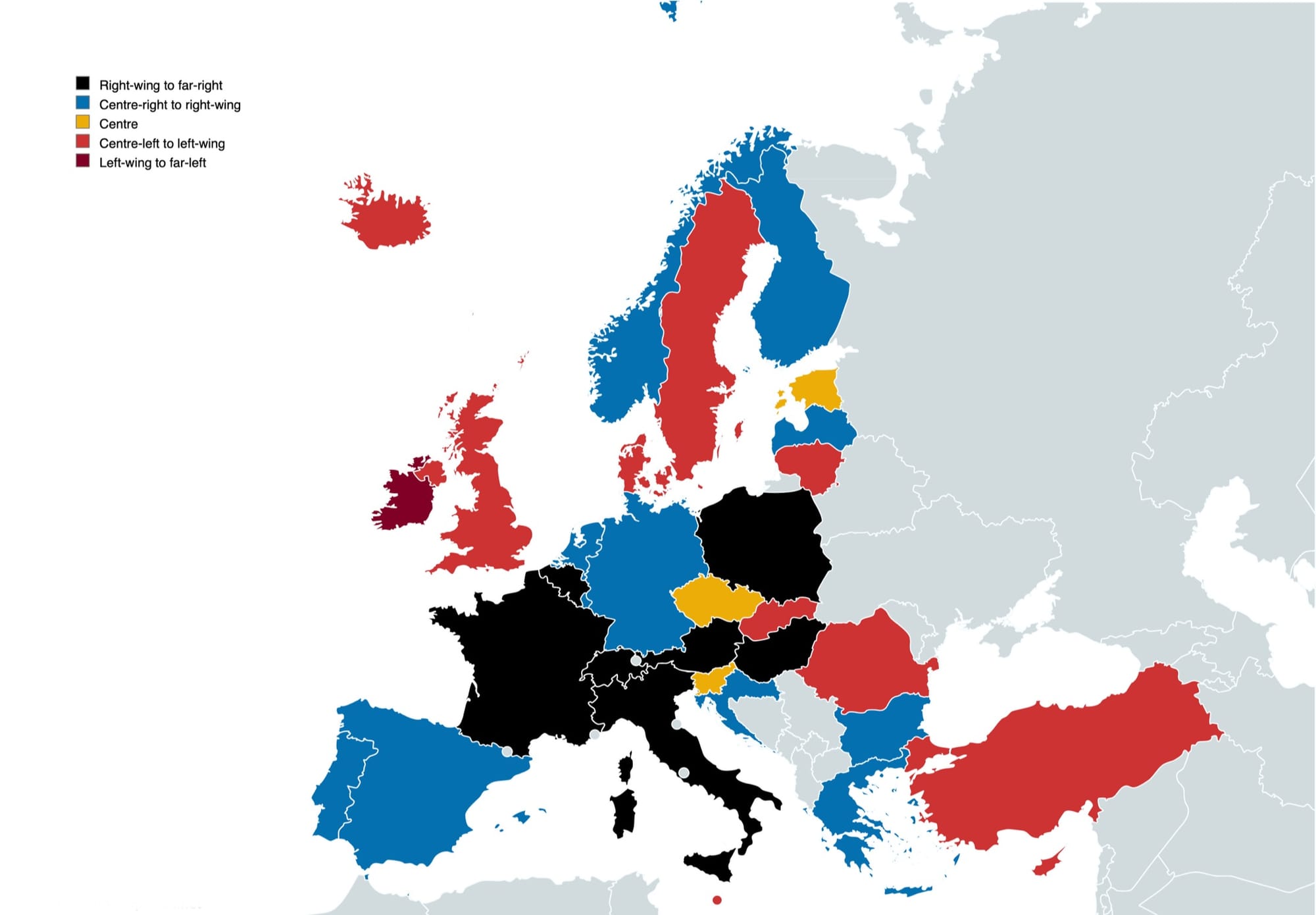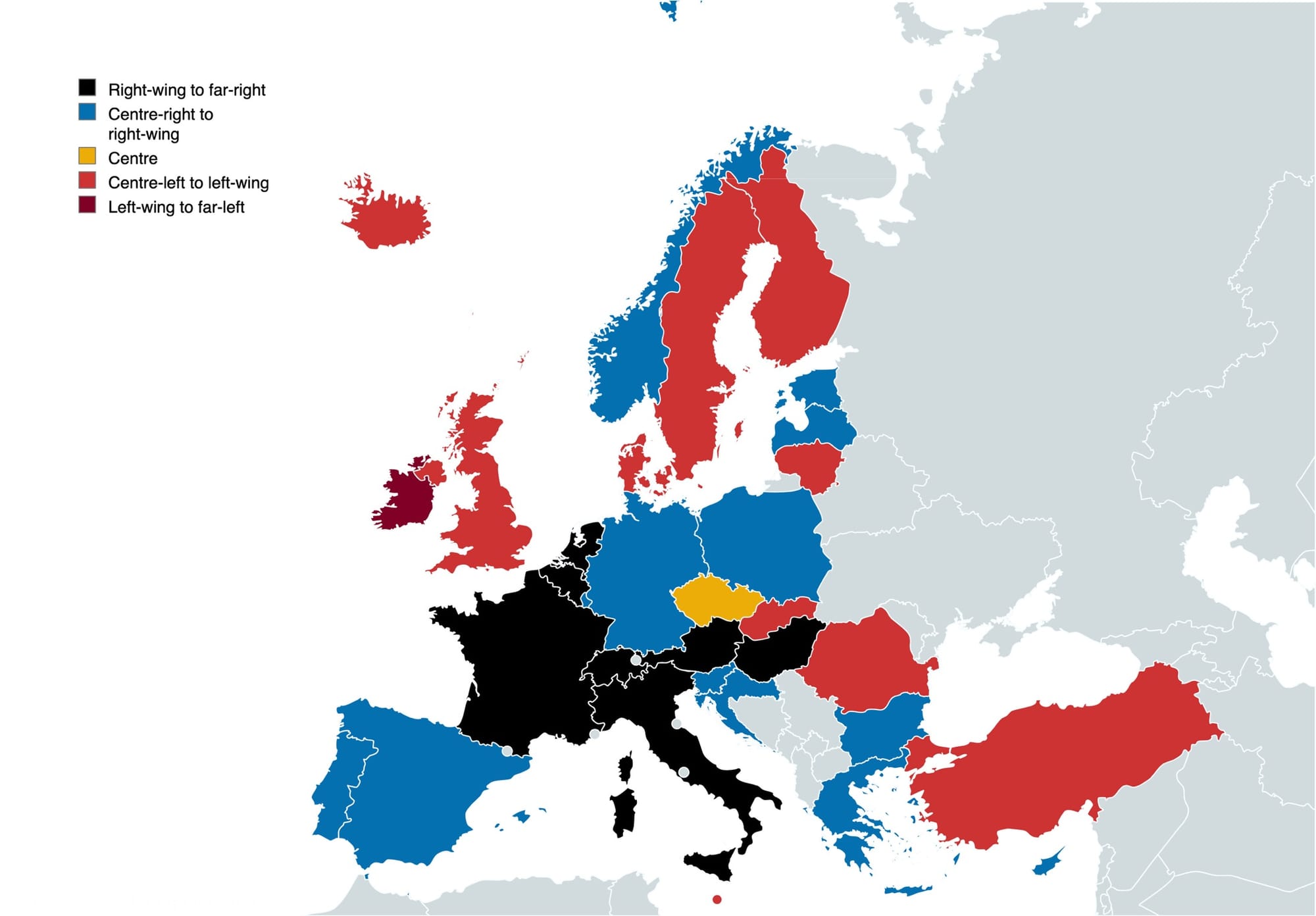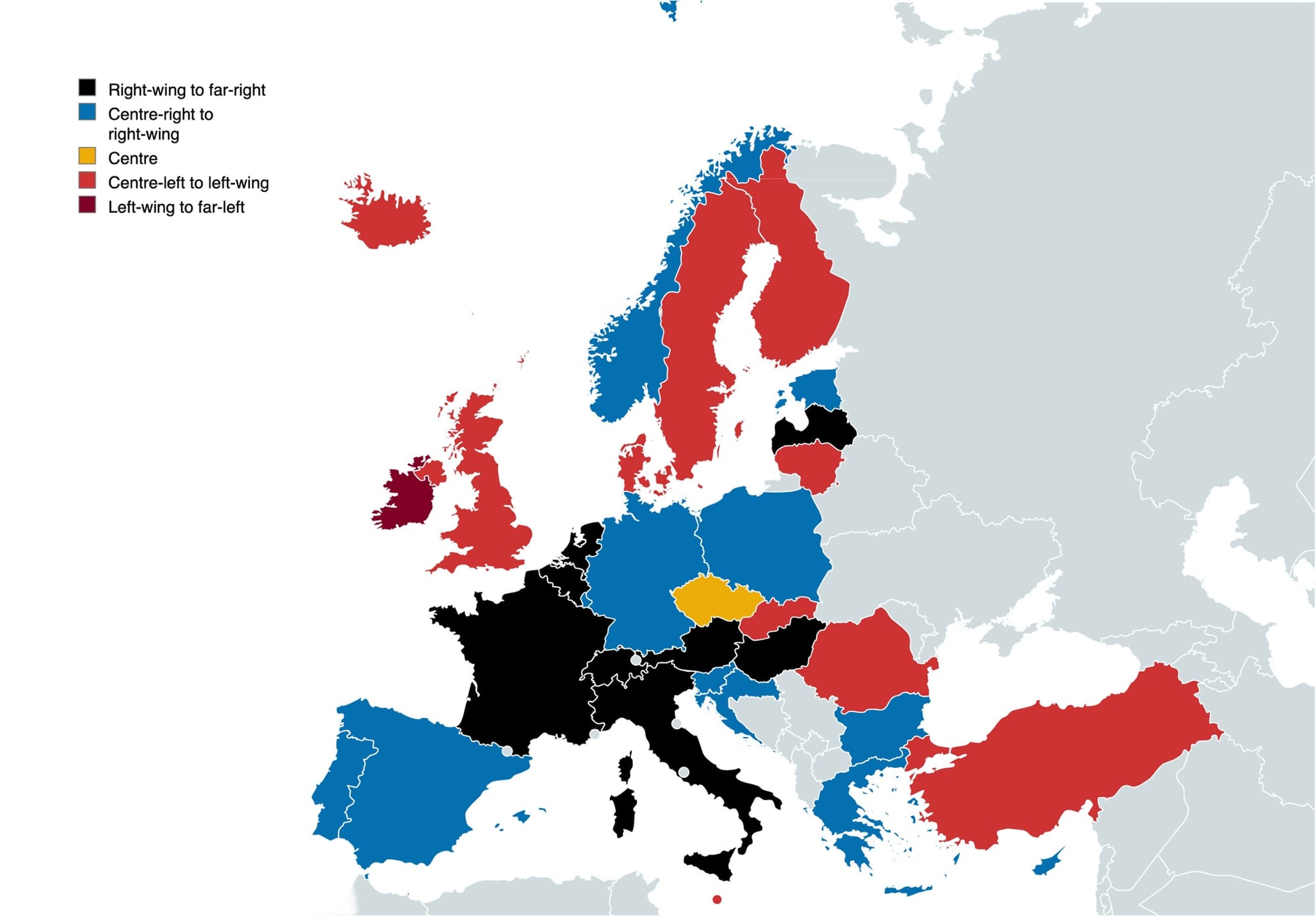Numbers Don't Lie: Change in Latvia

The European Union with its 27 member states has headed to the ballot box. Moreover, the United Kingdom is nearing Election Day with party machinery in the works to sway voters. A continental campaign has raged, in which about all Europeans have been included. The EU election culminated in much of the same; with the right-wing to far-right making clear gains with the centre-right to right-wing not far behind. However, the different results domestically entailed the resignation of a liberal Belgian Prime Minister, the calling of a French snap-election by President Emmanuel Macron, and Fidesz in Hungary facing yet another challenge in the form of Tisza. This new political party has been gaining ground. Simply Europe is a changing continent, whether it be in the United Kingdom, Belgium, or anywhere else.
As a benchmark the map below showcases the largest political party in each country's domestic politics, this map in particular reflects the result 1 year ago (to compare with current figures). Ideologies are classified through EU party affiliation or what the consensus agrees upon.

At this time the National Rally in France was asserting itself as the dominant party in French politics, widening the gap between itself the left alliance NUPES, and Emmanuel Macron's Renaissance Party. In the Netherlands the BBB faced a steep decline, however, remained the largest. The Dutch party would attempt to remain, though, ultimately the fall was imminent. On the other hand, both Iberian nations are blue, reflecting the challenges Socialist parties faced in the country. Estonian Reform and the Slovenian Freedom Movement both remained the biggest parties in the home countries, leaving some centrists' bastions alive since the French and Dutch defections. Irish Sinn Féin continued to uphold high support and so did the Brothers of Italy headed by Giorgia Meloni. Lastly, the Turkish CHP had overtaken the AKP, reflecting discontent with Erdogan's party. There are 11 centre-right to right-wing nations, 10 centre-left to left-wing states, 7 right-wing to far-right countries, 3 centre nations, and 1 left-wing to far-left. The map below showcases the same information as the one above, however, with last month's polling.

The fall of the centrist holdouts, namely Estonia and Slovenia, left the Czech Republic alone. ANO 2011 now represented the yellow characterisation by itself. Both Estonia's and Slovenia's liberal parties faced electoral challenges at home. The Polish switch from PiS to Civic Coalition led by Donald Tusk severely weakened the right-wing to far-right category's stance in the continent. However, the strengthened position in France and the addition of the Netherlands may even things out. Nonetheless, PiS had dominated politics domestically for the longest time and its fall reflects how the right-wing to far-right can be defeated when the electorate is presented with a preferred alternative. A minor change is the Finnish defection to the centre-left to left-wing, the country's polling is tight and the centre-right to right-wing is not far behind. 13 (+2) blue countries, 10 (-) red, 7 (-) black, and 1 (-2) for the centrist and the left-wing to far-left. Beneath is the same information as below, however, with the most recent polling:

Interestingly the only difference since last month is Latvia changing from the right-wing to far-right. A change was anticipated as the blue-categorised New Unity experienced a substantial fall from grace. The current largest party, the National Alliance, has slowly risen in the polls since the country's election in 2022. However, the trend line projected the Progressives (centre-left to left-wing) would become the largest, though that projection was broken as the party fell in the polls.
Otherwise, the differences between now and a month ago are large shifts within national polling that have kept the categorisation as the largest party. For example, in Belgium, the New Flemish Alliance has overtaken the Flemish Interest party in a swift move ahead of the EU election. In Britain Labour has declined ever so slightly, the Finnish Social Democrats have strengthened their lead and Portugal remains competitive. French National Rally by far remains the largest party, though, both the left and Renaissance are making moves up, whilst Les Républicains are falling. Civic Coalition in Poland is widening its margins with PiS. In total, there are 11 (-2) blue states, 10 (+1) red, 8 (+1) black, 1 (-) yellow and 1 (-) dark red.
The shift in Belgium and most notably Latvia are the most prominent changes to the map this month. However, internally, what the infographic does not show, Europe is changing, whether it be strengthening leads as in Poland and Finland or the margins coming down to the wire like in Portugal or Norway. Europe is still evolving, even after Election Day.



